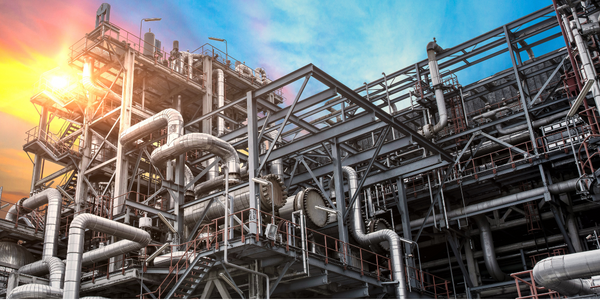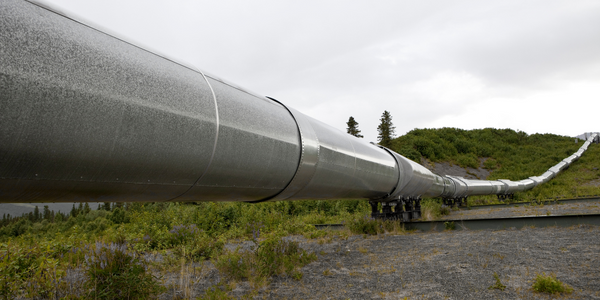Technology Category
- Actuators - Hydraulic Actuators
- Sensors - Utility Meters
Applicable Industries
- Cities & Municipalities
- Oil & Gas
Applicable Functions
- Maintenance
- Product Research & Development
Use Cases
- Digital Twin
- Intelligent Urban Water Supply Management
Services
- System Integration
- Testing & Certification
About The Customer
ATLC Infraconsultants Pvt. Ltd. is a private company that was contracted to design a project aimed at developing a piped water system for the 128 villages in the Marihan Block in Mirzapur, Uttar Pradesh, India. The project was initiated by the state government to improve the quality of life for the 300,000 residents and the many visitors to the significant Hindu temple, Vindhyachal Dham. The company was tasked with the challenge of designing a system that would continue operations and accommodate population growth through at least 2053, as well as meet state regulations. The project required augmenting the existing water treatment plant, a new pumping station at the water treatment plant, four additional water pumping stations, and 12 service reservoirs, as well as the many kilometers of transmission and distribution mains and house connections with water meters.
The Challenge
The state government of Uttar Pradesh, India, initiated a project to develop a piped water system to ensure equal distribution of treated water to all 128 villages in the Marihan Block in Mirzapur. The project was aimed at improving the quality of life for the 300,000 residents and the many visitors to the significant Hindu temple, Vindhyachal Dham. ATLC Infraconsultants Pvt. Ltd. was contracted to design the project, which needed to continue operations and accommodate population growth through at least 2053, as well as meet state regulations. The project required augmenting the existing water treatment plant, a new pumping station at the water treatment plant, four additional water pumping stations, and 12 service reservoirs, as well as the many kilometers of transmission and distribution mains and house connections with water meters. The design team faced challenges in obtaining a comprehensive view of the undulating topography, which varied in height by as much as 140 meters, and providing alternate route alignment suggestions. They also struggled to analyze the effects of design changes on water pressure and meet the required 90-day deadline with the older tools they were using.
The Solution
ATLC Infraconsultants Pvt. Ltd. decided to use OpenFlows WaterGEMS and STAAD to seamlessly design the network and undertake hydraulic analysis. The detailed hydraulic analysis revealed the exact state of the water table, which helped them determine where assets would need to be built and how to ensure clean water. Using OpenFlows WaterGEMS, the design team incorporated the site data and performed updated hydraulic analysis as needed to optimize the designs, ensuring their safety and reliability. This analysis included a complete evaluation of the water supply, pressure zoning for equalized distribution, and a determination of the most effective distribution to household connections. With STAAD, ATLC optimized the structural designs of intake wells, elevated service reservoirs, and water treatment plants. They built a digital twin of the entire work area that clearly visualized the scope and details of the project, helping them share their work with project stakeholders.
Operational Impact
Quantitative Benefit

Case Study missing?
Start adding your own!
Register with your work email and create a new case study profile for your business.
Related Case Studies.

Case Study
Turning A Stadium Into A Smart Building
Honeywell created what it called the “intelligent system” for the National Stadium in Beijing, China, turning the venue for the opening and closing events at the 2008 Summer Olympics into a “smart building.” Designed by highly controversial artist Ai Weiwei, the “Bird’s Nest” remains one of the most impressive feats of stadium architecture in the world. The 250,000 square meter structure housed more than 100,000 athletes and spectators at a time. To accommodate such capacity, China turned to Honeywell’s EBI Integrated Building Management System to create an integrated “intelligent system” for improved building security, safety and energy efficiency.

Case Study
Taking Oil and Gas Exploration to the Next Level
DownUnder GeoSolutions (DUG) wanted to increase computing performance by 5 to 10 times to improve seismic processing. The solution must build on current architecture software investments without sacrificing existing software and scale computing without scaling IT infrastructure costs.

Case Study
Remote Wellhead Monitoring
Each wellhead was equipped with various sensors and meters that needed to be monitored and controlled from a central HMI, often miles away from the assets in the field. Redundant solar and wind generators were installed at each wellhead to support the electrical needs of the pumpstations, temperature meters, cameras, and cellular modules. In addition to asset management and remote control capabilities, data logging for remote surveillance and alarm notifications was a key demand from the customer. Terra Ferma’s solution needed to be power efficient, reliable, and capable of supporting high-bandwidth data-feeds. They needed a multi-link cellular connection to a central server that sustained reliable and redundant monitoring and control of flow meters, temperature sensors, power supply, and event-logging; including video and image files. This open-standard network needed to interface with the existing SCADA and proprietary network management software.
.png)
Case Study
Smart Street Light Network (Copenhagen)
Key stakeholders are taking a comprehensive approach to rethinking smart city innovation. City leaders have collaborated through partnerships involving government, research institutions and solution providers. The Copenhagen Solutions Lab is one of the leading organizations at the forefront of this movement. By bringing together manufacturers with municipal buyers, the Copenhagen Solutions Lab has catalyzed the development and deployment of next-generation smart city innovations. Copenhagen is leveraging this unique approach to accelerate the implementation of smart city solutions. One of the primary focus areas is LED street lighting.

Case Study
Refinery Saves Over $700,000 with Smart Wireless
One of the largest petroleum refineries in the world is equipped to refine various types of crude oil and manufacture various grades of fuel from motor gasoline to Aviation Turbine Fuel. Due to wear and tear, eight hydrogen valves in each refinery were leaking, and each cost $1800 per ton of hydrogen vented. The plant also had leakage on nearly 30 flare control hydrocarbon valves. The refinery wanted a continuous, online monitoring system that could catch leaks early, minimize hydrogen and hydrocarbon production losses, and improve safety for maintenance.








